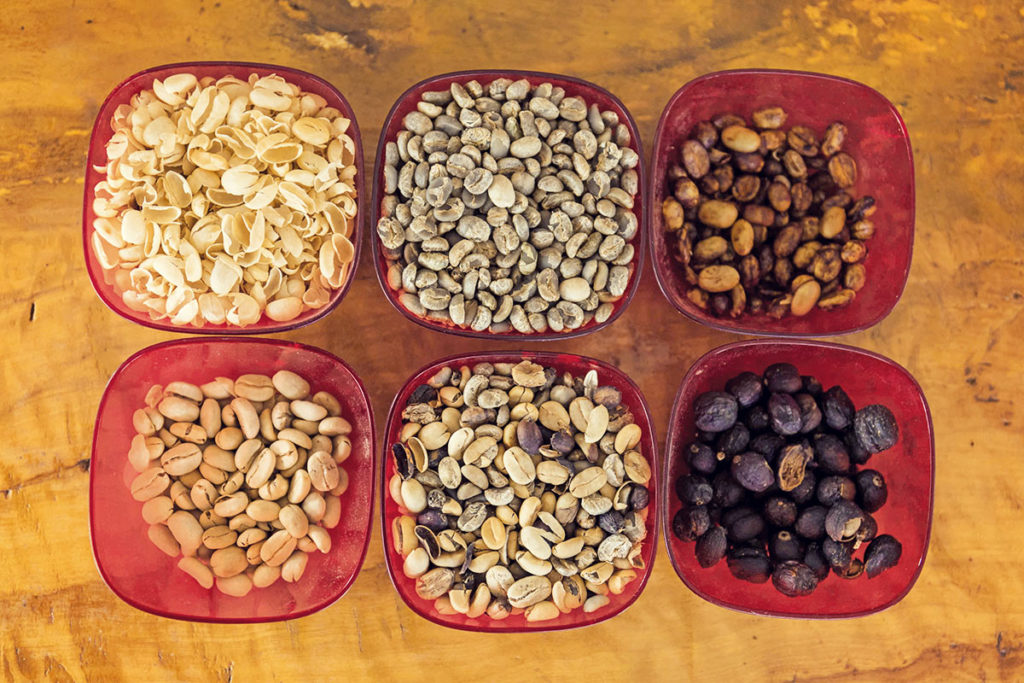This article was co-written by Joshua Jones of @canadiancoffeeadventures
The journey the coffee bean takes to go from a coffee cherry on a tree to a roasted bean that you brew to make your coffee each morning is quite incredible. One of the most important steps in that journey is the processing that happens after the coffee cherry is picked and sorted. The three primary ways to process coffee are washed, honey and natural.
Washed Processing
Washed processing involves using water and a wet mill to remove all of the fruit and mucilage from the coffee cherry before drying. Many people like this process because the flavor comes almost exclusively from the seed itself and it can been seen as a clear expression of its terroir (geographic growing conditions). Unlike the other two methods below, the washed process focuses only on the coffee bean—not on the fruit around it.
Honey (Pulped Natural) Processing
Honey processing involves drying the seed with a portion of the mucilage still intact. Much of the coffee cherry is washed off, but the sticky, sugary layer beneath the skin remains. This remaining golden, sticky mucilage is similar to honey, which is where the name of the process originates.
Within the honey category there are sub-categories (white, yellow, golden, red, black, etc.). White and yellow implies less mucilage is left, while gold, red and black honey coffees have more of the mucilage left on the bean. Many people love the sweet cups these coffees often produce and the more restrained fruitiness.
Natural (Dry) Processing
Natural (or dry) processing involves drying the whole cherry as is. It is highly dependent on drying conditions and is the most eco-friendly of the processes (because it doesn’t use the immense amount of water the washed processing uses). Natural coffees are known for their sweetness and elevated body. Many people love the explosive fruitiness and exotic nature of naturals, though they are critiqued for the sometimes unpleasant fermented tastes that can creep in.
There are other more experimental processing methods, fermentation and other innovations happening in coffee processing, but the three above cover almost all of the speciality coffee market. None of these methods is inherently better or worse than another; each method can produce some amazingly delicious coffees.
Join the conversation on Instagram. Do you have any questions about coffee processing? Do you have a favorite processing method? Share with me on Instagram.
